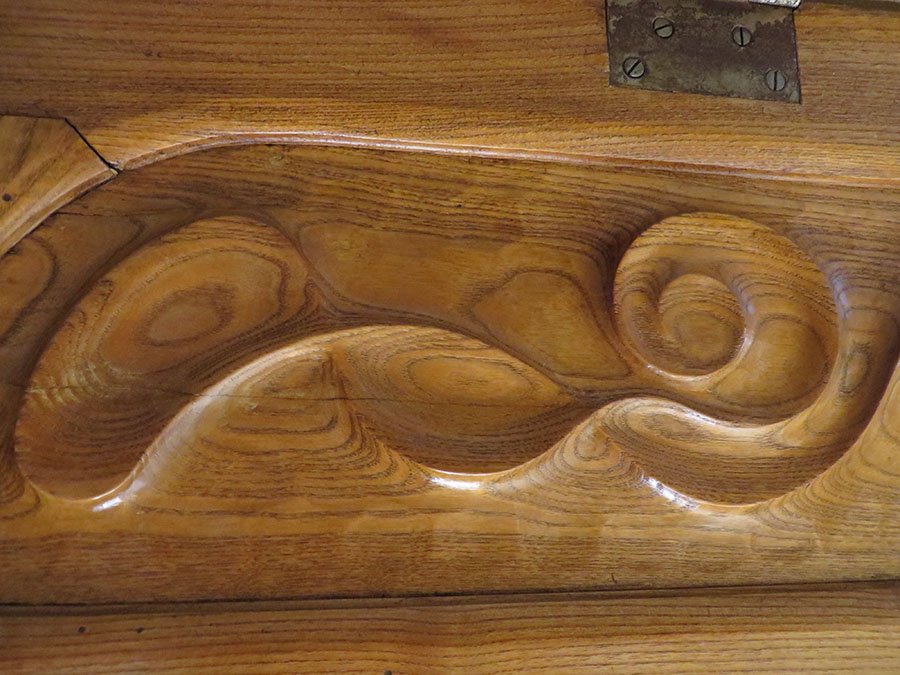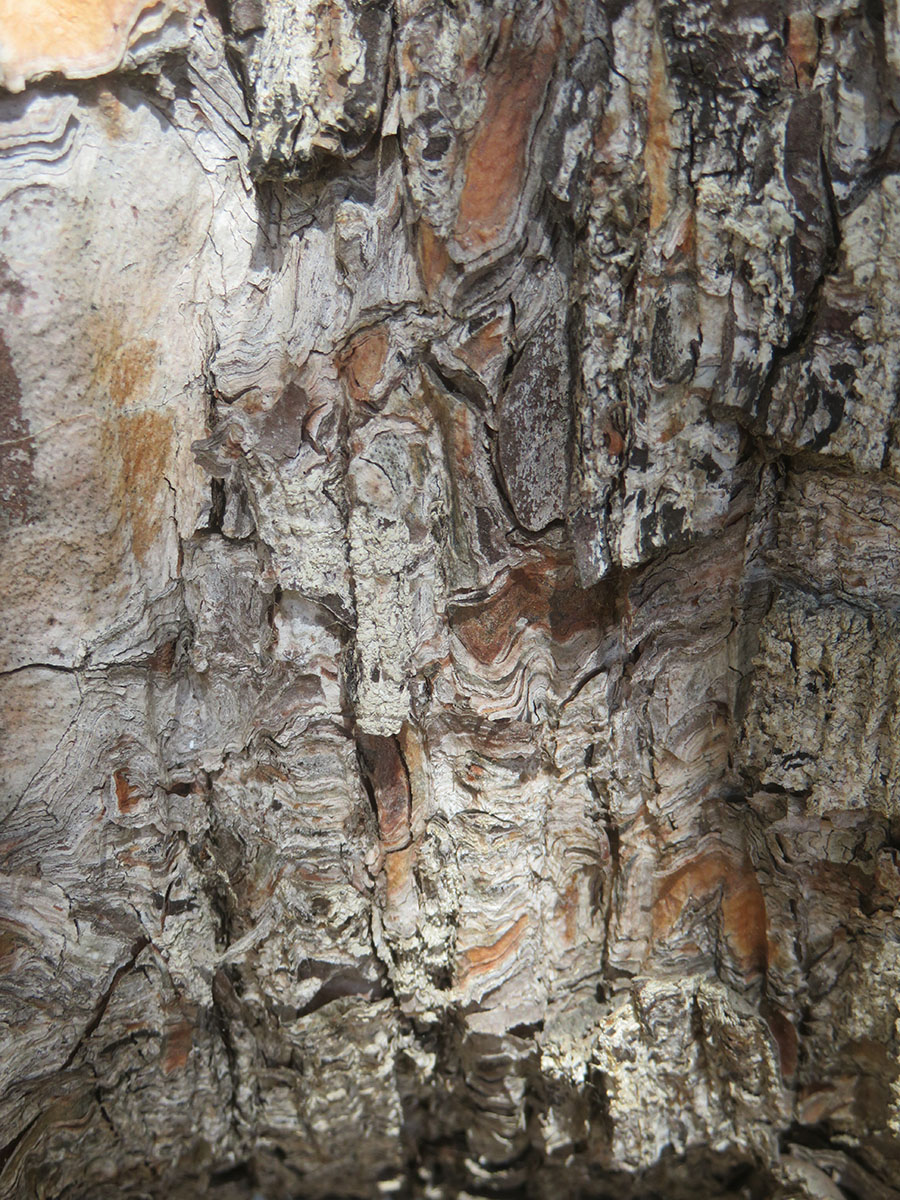 One of the farthest points of my neighborhood is a hard sandy strip of open land which I call “the lookout.” From there, I see the Pacific and La Jolla Cove to the west; to the east lies an expanse of settled land, then the distant Cuyamaca Mountains. And at the southern end stands my destination, a landmark in itself: a striking, twisted pine tree leaning eastward.
One of the farthest points of my neighborhood is a hard sandy strip of open land which I call “the lookout.” From there, I see the Pacific and La Jolla Cove to the west; to the east lies an expanse of settled land, then the distant Cuyamaca Mountains. And at the southern end stands my destination, a landmark in itself: a striking, twisted pine tree leaning eastward.

A few years back, someone (probably the city of San Diego) did some drastic pruning so that walkers and runners can pass by without bumping their heads. However, the graceless chopping left the pine with a windblown, distorted shape, even a Wuthering Heights aspect. Seen from the north, as I usually come upon it, the tree is also reminiscent of the famed Lone Cypress on the Monterey Peninsula. An orphan, I think, the pine probably sprouted from a bird-dropped seed; it survives with no ongoing care in a mound of sand, covered by what looks like a thin layer of dirt.
However, surprisingly, the pine tree has an address: 7984 La Jolla Scenic Drive North, according to Google, though no number is painted on the curb.
As for any status conferred by having an address, this tree is more than worthy.
For the pine is magnificent. Battle-scarred, beleaguered, deformed if you will, this pine is a gift. It is at once a biological specimen, a tree, a veritable factory of cones, an example of survival against the odds—and a convoluted tangle of branches. The pine embodies someone conflicted in mind or “all tangled up in herself” yet it displays a kind of elephantine grace.
And a sculptural self.
As with any modern sculpture, you must walk all around it, and keep walking around, to appreciate every angle—I wish I could look from above, too—and different light and weather affect your appreciation as much as your angle of vision. The tree reminds me of Mark diSuvero’s Mahout-Vishnu, which I saw at the San Francisco Museum of Contemporary Art some years ago. So perhaps “elephantine grace” isn’t far off the mark, for a mahout is someone who rides and commands elephants.


Every time I walk to the pine, I am drawn to that grand bulging branch, much as my eye revels in the curved pipe of the sculpture; yet the bulge is only one feature of the tree’s turns and twists. I go as I return to any great art object— thus responding to the other part of di Suvero’s title: Vishnu, the great Hindu god, source of preservation and power and endurance. Thus I try to write here with appropriate reverence and I expect to keep returning as long as I live.
Though my grandson has climbed it, I neither ride the tree nor command it, but interact with the tree in many ways, perhaps as a mahout does with an elephant.
For there is more to meet than shape. What skin is the “elephant” clothed in? No one word or quality answers the question, for its bark varies all over the surface, as though the pine has registered moods as well as weathering and growth. I find grandeur, also organic patterns which lead me to once again invoke an artist: Antonio Gaudi and his characteristic undulating patterns. (The image is from Casa Batllo, Barcelona.)


Studying the pine’s bark, I also find what might be viewed as evidence of geologic turbulence, as though vast tectonic forms had been crushed together, the earth fissured and pressured, then frozen in that moment of pressure.

This bark keeps inviting adjectives: crenelated, ruddy, fissured, flaky, even reptilian, to name a few. I study patches as though they were vast canvases of great painters’ work. Such complexity, such three-dimensional effects. At the same time, I find myself thinking of landforms in a topographical atlas of a continent.

And all this as I accommodate my body to the pine’s shape, mindful of my footing on all those cones on the sloping ground beneath. I run my hands over the curving branches—and on a warm day, resin stickies my fingertips. No matter! I love contact with the body of this tree. Yet another close encounter as I engage and move within and around it, blessed again to meet this prayer of a tree.


Love to read the interesting comparisons you make Sally, so thought provoking!😊
Beautifully …you took me there❤️
Enjoyed the walk with you today, Sally.
Wow! Sally, your writing is always wonderful, but, my friend, this essay hits the ball out of the park! It occurs to me that this would make a “Brief but Spectacular Moment” on the PBSNewsHour or some other public space that appreciates the intersection of art, culture, and science. And you can see your pine from above if you rent a drone for a few hours.